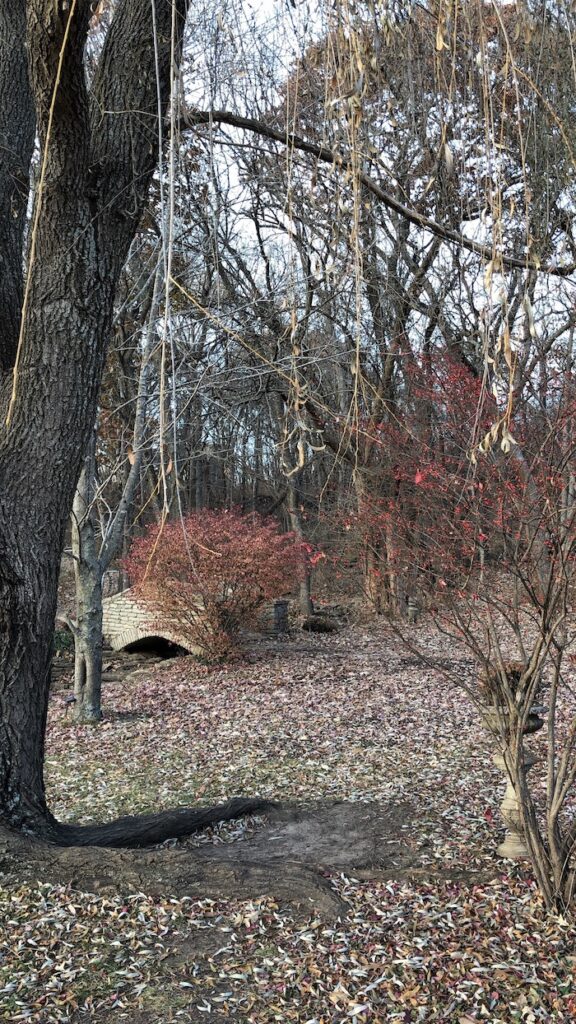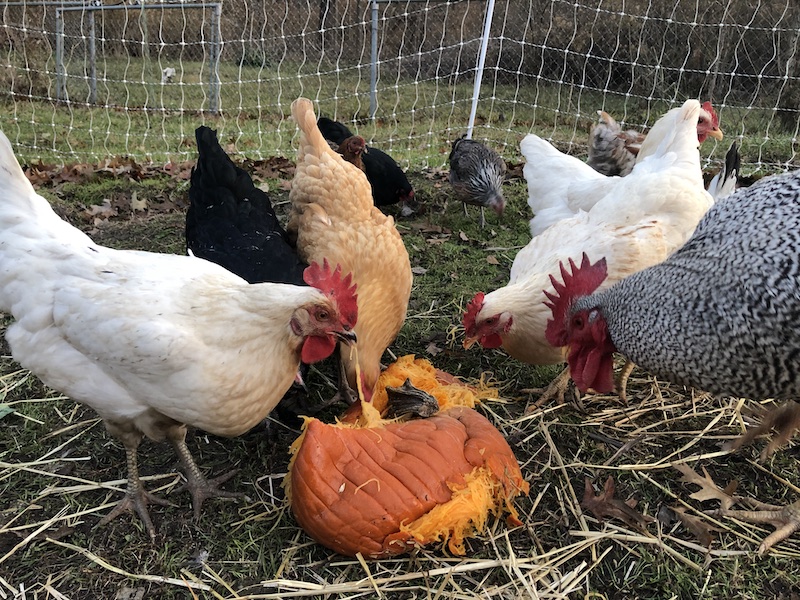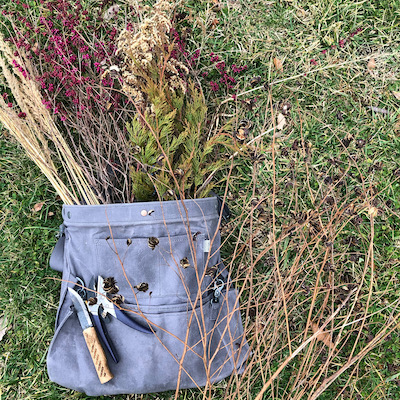
Even in the midst of our winter hibernation, there are still things we can be doing outside as we look back on fond memories of the last growing season. For those in a cold-temperate climate, the winter season offers us something unique – a time of planned rest. If you are from a warmer climate (USDA Zone 9-11, CLICK HERE for a list specific to subtropical climates).
Winter is a time of restoration, rejuvenation, and healing. It’s like a divine pause for us to reset. During this time there are still crucial things happening that our eyes don’t always see easily.
Sometimes though, we have to see more with our eyes closed than our eyes open.
Chickens and ducks are resting their bodies in order to restore nutrient levels after a busy laying season and fall feather molting. Fallen leaves and plants are decomposing and returning important nutrients to the soil. Fungal networks are expanding underground to strengthen the soil web. The cold is killing off bacteria and disease in the soil and helping with insect control. The roots of trees continue to grow deeper, even in depths of the winter months. Winter is indeed a time of unsung activity, but should also be a time of rest for you and your garden.
Here are just a few things you can add to your December Gardening To-Do List.
In the Garden & Greenhouse
- Continue cover the soil with organic matter. You can use chopped up leaves (i.e. picked up with the lawn mower), straw, compost, etc. Better yet, just use layers of each.
- Continue to plant garlic or root crops (Jerusalem artichokes, strawberry root stock, etc.)
- Remove any remaining dead plant matter from last year. Tomato wilt and fungal diseases can stay in the soil, if it doesn’t get cold enough over the winter.
- If you are preparing any new garden beds, you can cover the grassy areas with black tarps for the winter to start killing off the grass and weeds, so it’s easier to work in the spring.
- Turn the compost pile every few weeks to keep things decomposing over the winter. Add an occasional bucket of water to keep moisture levels up, especially if there are a lot of leaves in the pile.
- Plant seeds that need to be cold stratified (pawpaw, acorns, etc.)
- Apply winter soil probiotic and microbial spray (I use a product called BioAg, which is produced in Kansas City, MO).
- Test soil samples and begin making amendment plans for springtime.
In the Food Forest
- Prune all fruit and nut trees, shrubs, and bushes. Remove branches that are preventing light from getting to other branches. Open and airy scaffold structure is best to promote fruiting.
- Remove all rotten or hard fruit (still on the trees) and put in the compost pile.
- Check for deer damage (eating branches, buck rubs, etc.) at least weekly. Save some deer bones from hunting season to make bone sauce for deer repellant (recipe coming soon). Pack the snow around the base of tree trunks to pack down vole and rodent tunnels.
- Order organic orchard supplies for the coming season – be sure to look for holiday sales! Include seaweed extract, BioAg, neem oil, Basic H (for all foliar applications), and fish emulsion.
- Finish any winter mulching (wait for compost until spring, so you don’t add too much nitrogen now).

In the Shed
- Check mouse traps frequently. Add cotton balls with peppermint oil to deter rodents.
- Finish oiling up any tools that got missed.
- Look for online sales for any equipment that need to be replaced.
In the Chicken Coop

- Feed extra protein (meal worms, black oiled sunflower seeds, bugs, etc.) to help them during their recovery season.
- Do NOT use supplemental lighting to increase egg production. Chickens need this off season to let their bodies rest. Let them have a natural rhythm of rest too.
- Add a small amount of corn or millet to their diet to help with caloric intake in the winter months. This helps keep them warm naturally. NEVER use heat lamps in a coop or run.
- Purchase suet blocks (>5% protein) as you see them on sale. The fat content helps birds stay warm for the winter. (click here for more tips on keeping birds warm)
- Rotate straw and bedding in the coop to keep things clean and sanitary.
- Keep water unthawed
- Use an electric water heater (OR)
- Use two watering containers and bring them in at night / rotate them
- Note: The salt water bottle in the container does NOT work outside of 1-2 degrees below freezing and only for a short time. This can work as an addition, but should not be your primary means of keeping water unthawed.
- Add garden and flower bed cuttings to their run for them to “go through” and eat bugs and seeds before composting them.
- Feed spent pumpkin and squash (from fall decor) to chickens. It helps boost their immune systems and can be a preventative for worms. NOTE: Pumpkin seeds are NOT a proven treatment for worms, but a great as part of your preventative maintenance regime. You may need to break them open for the birds to get at the inner meat of the pumpkins.
- Give healthy protein / omega 3 treats: One cheep way to do this is to go to a local pet store and get feeder fish (cheep minnows). Put them into a shallow tray (with a bit of water) and watch the birds catch them! You can also purchase live crickets from pet stores and feel them fresh veggies for a day or two. Feed several per day to your birds for a healthy winter treat.
Around the House & Perennial Beds
- Continue to plant spring bulbs every time the soil thaws. This can be done all winter. Click here for some of our favorite bulbs to plant in the winter.
- Pay attention to windows and address any drafts immediately. Older winters should have plastic over them (purchased at a local hardware store), which will help save $$ on heat bills. Pull blinds to keep heat inside at night and open them during the day to let natural light inside.
- Water house plants carefully.
- Only water them when you can put your finger in the soil and it feels dry up to your first knuckle (about 1″ deep). If the soil feels or looks damp – do NOT water.
- Water in the sink until water runs out of the bottom, so you know the full root ball is saturated. Let it drain for a few minutes before returning to a sunny spot near a window.
- Rotate plants every view days for even light distribution.
Winter Ideas for Kids

- Take nature walks on nice days.
- Have kids look for interesting textures and shapes
- Look for buck rubs or signs of animals
- Put out bird feeders and make fun food treats for wildlife. Consider a natural Christmas tree outside for the birds with all edible ornaments and garland.
- Visit a nature center or arboretum in your area and let the kids pick out a new house plant to take care of.
- Attend a local gardening, mushroom, or permaculture event in your area.
- Visit a local farm. Many offer family friendly activities.
- Have kids help you pick out seeds for next year in the seed catalogues. Consider giving them their own section of the garden to plant in the spring. Involve them in the entire process of planning as well as planting and maintenance. It’s amazing the veggies kids will eat when they picked it out, planted it, and grew it themselves.
Time to Plan
During these winter months while the fruit trees and gardens are dormant, it’s the perfect time to plan for the spring. If you are interested in a personalized permaculture consultation for your property, we do both in-person visits to your site AND virtual visits (for those out of our area). CLICK HERE to learn more.

